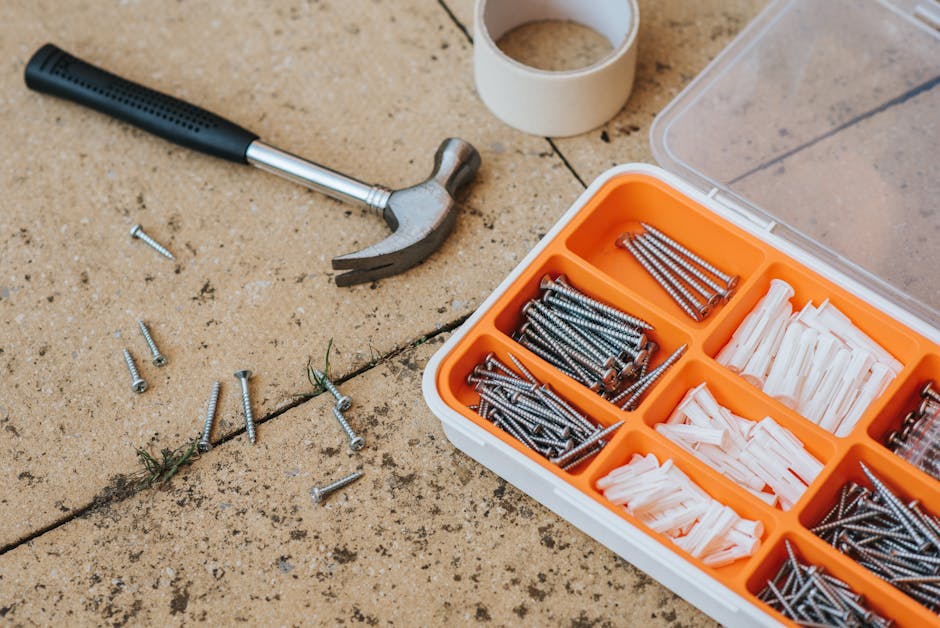Cara Memperbaiki Sanyo Mati: From Zero to Hero (Maybe!)

Cara Memperbaiki Sanyo Mati: From Zero to Hero (Maybe!)
Ah, the dreaded dead Sanyo. It's the silent scream of a hot afternoon, the damp dread of laundry piling up, and the existential question: "Is this thing even worth fixing?" Fear not, weary warrior against appliance obsolescence! This guide is your weapon of choice, your toolbox of troubleshooting tips, to breathe life back into your deceased Sanyo. We'll go from "completely useless" to "hopefully functioning," with a dash of humor and a sprinkle of technical know-how.
Diagnosing the Deceased: What Ails Your Sanyo?

Before you start tearing things apart like a caffeinated toddler with a Lego set, let's do some detective work. Understanding the symptoms is crucial for a proper diagnosis. Is your Sanyo fridge, washing machine, water pump, or something else entirely? The approach varies. Let's break it down:
1. No Power At All (The Silent Treatment):
If your Sanyo is completely unresponsive, acting like it's been turned into a very expensive, space-consuming paperweight, start with the basics:
- Check the Outlet: Seriously. Plug something else into the outlet. A lamp, a phone charger, your toaster oven. Is it working? If not, the problem isn't your Sanyo, it's your electrical outlet. Call an electrician. Electricity is not a DIY experiment, unless you're aiming for a Darwin Award.
- Check the Power Cord: Inspect the cord for any damage – cuts, fraying, or exposed wires. A damaged power cord is a serious fire hazard and needs to be replaced immediately. Don't be a hero, just replace it.
- Check the Circuit Breaker/Fuse: Locate the circuit breaker box (usually in your basement, garage, or a utility closet). Look for a tripped breaker or a blown fuse. Reset the breaker or replace the fuse. If it trips again immediately, you likely have a short circuit. Time to call in the professionals.
- Internal Fuse: Some Sanyo appliances have an internal fuse that protects the electronics. This is usually located near the power cord entry point inside the appliance. You'll need to open up the appliance to check this. Warning: Disconnect the appliance from the power outlet before opening it up. Electrocution is a real buzzkill. Use a multimeter to check the fuse for continuity. If it's blown, replace it with a fuse of the same rating.
2. Some Power, But Not Working Right (The Grumbling Ghost):
Maybe it lights up, buzzes weakly, or makes unsettling noises but refuses to actually do anything. This is more complex and requires careful observation.
Specific to Washing Machines:
- Won't Fill with Water: Check the water supply valves. Are they fully open? Check the inlet hoses for kinks or blockages. The inlet valve itself might be faulty (use a multimeter to test for continuity when energized).
- Won't Drain: Check the drain hose for kinks or blockages. The drain pump might be clogged with lint or debris (often requires disassembling the pump). The pump motor itself might be faulty (use a multimeter to test for continuity).
- Won't Spin: Check the drive belt. Is it loose or broken? The motor might be faulty. The lid switch (if equipped) might be broken, preventing the machine from spinning when the lid is open.
Specific to Refrigerators:
- Not Cooling: Check the condenser coils (usually located on the back or bottom of the refrigerator). Are they dusty and dirty? Clean them with a brush or vacuum cleaner. The compressor might be faulty. The condenser fan motor might be faulty. The evaporator fan motor (inside the freezer) might be faulty.
- Too Cold/Freezing Food: The thermostat might be faulty. The damper control (if equipped) might be stuck.
Specific to Water Pumps:
- No Water Pressure: Check the foot valve (at the end of the suction pipe) for clogs. The impeller might be damaged. The pump motor might be faulty.
- Pump Runs But No Water: The pump might need to be primed (filled with water). Check for air leaks in the suction pipe.
3. Error Codes (The Cryptic Message):
Modern appliances often display error codes to indicate specific problems. Consult your Sanyo appliance's user manual to decipher the meaning of the code. A quick Google search for "[Sanyo Appliance Model Number] Error Code [Error Code]" can also provide valuable information and potential solutions.
The Sanyo Savior Toolkit: Assembling Your Arsenal

Before you delve into the repair process, make sure you have the right tools. Having the right tools makes the job easier, safer, and less likely to result in you throwing things across the room in frustration.
- Screwdrivers: A variety of sizes (Phillips head and flathead).
- Pliers: Regular pliers, needle-nose pliers, and possibly locking pliers.
- Multimeter: Essential for testing electrical components. Learn how to use it safely and effectively.
- Wrench Set: For tightening and loosening nuts and bolts.
- Socket Set: For tightening and loosening nuts and bolts in hard-to-reach places.
- Wire Strippers/Crimpers: For electrical repairs.
- Electrical Tape: For insulating wires.
- Voltage Tester: To ensure power is off before working on electrical components.
- Safety Glasses: Protect your eyes from flying debris.
- Work Gloves: Protect your hands from sharp edges and electrical shock.
- Camera/Phone: Take pictures of how things are connected before you disconnect them. This will save you a lot of headaches when reassembling the appliance.
- User Manual: Refer to the user manual for specific instructions and diagrams.
- Google/YouTube: Your best friends for finding specific repair instructions and troubleshooting tips.
Diving In: Common Sanyo Repairs and Fixes

Now that we've diagnosed the problem and gathered our tools, let's tackle some common Sanyo repairs.
1. Replacing a Washing Machine Drain Pump:
This is a surprisingly common repair, often caused by clogged pumps. Here's a general outline:
- Disconnect Power: Absolutely crucial!
- Access the Pump: Usually located at the bottom of the washing machine, often accessible from the back. You might need to remove some panels.
- Disconnect Hoses: Carefully disconnect the hoses connected to the pump. Have a bucket handy to catch any remaining water.
- Disconnect Electrical Connections: Disconnect the electrical wires connected to the pump.
- Remove the Pump: Remove the screws or clips holding the pump in place.
- Install the New Pump: Reconnect the hoses, electrical connections, and secure the pump in place.
- Test the Machine: Run a short wash cycle to test the new pump.
2. Cleaning Refrigerator Condenser Coils:
This is a simple but often overlooked maintenance task that can significantly improve your refrigerator's efficiency.
- Disconnect Power: Again, crucial!
- Locate the Coils: Usually on the back or bottom of the refrigerator.
- Clean the Coils: Use a brush or vacuum cleaner to remove dust and debris.
- Reconnect Power: Power up the refrigerator and let it cool down.
3. Replacing a Water Pump Impeller:
A damaged impeller can significantly reduce water pressure. This involves disassembling the pump:
- Disconnect Power: Yep, still crucial!
- Disconnect Water Pipes: Disconnect the suction and discharge pipes.
- Disassemble the Pump: Carefully disassemble the pump housing.
- Remove the Impeller: Remove the damaged impeller.
- Install the New Impeller: Install the new impeller, ensuring it's properly seated.
- Reassemble the Pump: Reassemble the pump housing.
- Reconnect Water Pipes: Reconnect the suction and discharge pipes.
- Prime the Pump: Fill the pump with water to prime it.
- Reconnect Power: Power up the pump and test for water pressure.
When to Throw in the Towel: Knowing Your Limits

Let's be honest, not every Sanyo is destined for resurrection. Sometimes, the cost of repairs exceeds the value of the appliance, or the complexity of the repair is beyond your skill level. Here are some signs that it's time to call a professional (or consider a replacement):
- You Smell Burning Electrical Components: This indicates a serious electrical problem.
- You See Smoke or Sparks: Another sign of a serious electrical problem.
- You Are Not Comfortable Working With Electricity: Safety first! Leave electrical repairs to the professionals.
- You Are Frustrated and Ready to Launch the Sanyo Into Orbit: Take a break, and re-evaluate the situation later. Maybe a professional is the best option.
- The Repair Requires Specialized Tools or Knowledge: Some repairs require specialized tools or in-depth knowledge of appliance repair.
The Innovation Angle: Future-Proofing Your Appliance Habits

Beyond fixing the immediate problem, let's think about how to avoid this situation in the future. Innovation in appliance design focuses on longevity, energy efficiency, and ease of repair. When choosing a new appliance, consider:
- Energy Star Rating: More efficient appliances put less strain on your electrical system and reduce energy bills.
- Repairability: Look for appliances with readily available parts and repair information. Some manufacturers are starting to design appliances with easier disassembly in mind.
- Warranty: A longer warranty can provide peace of mind and cover unexpected repairs.
- Preventative Maintenance: Regularly clean and maintain your appliances to prevent problems from developing.
Conclusion: From Appliance Graveyard to Second Chance

Fixing a dead Sanyo can be a rewarding experience, saving you money and reducing electronic waste. With a little knowledge, the right tools, and a dash of courage, you can often bring your appliance back to life. Remember to prioritize safety, consult your user manual, and don't be afraid to ask for help when needed. And if all else fails, well, at least you gave it a shot. Now go forth and conquer those malfunctioning machines! And maybe, just maybe, you'll feel a little bit like a superhero in the process.